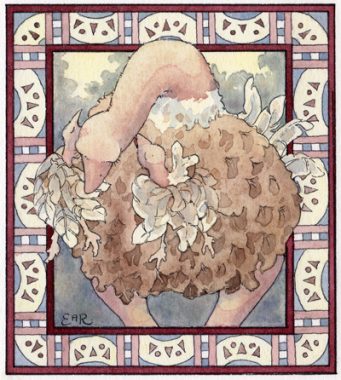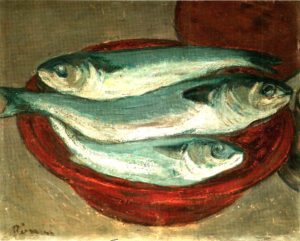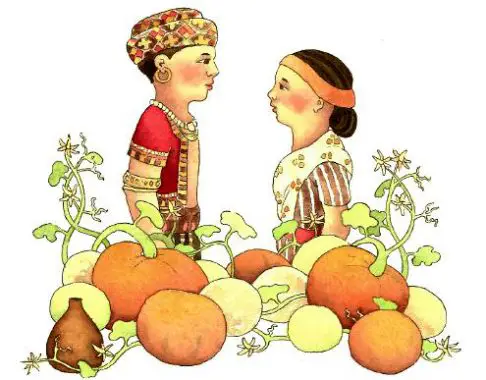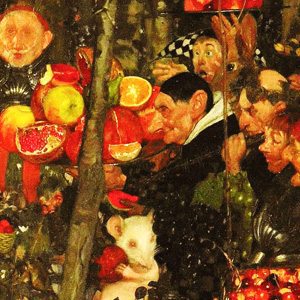We've heard you and we listened! You are loving our Early Reader versions of our most popular stories so we've added even more and are working on brand new ones for the coming week! We've added "Fur & Feathers" (what will Mama Ostrich do when Mama lion steals her chicks and calls them her own?), "The Empty Pot" (Jun's seed does not sprout...how can he compete with the other boys plants to become Emperor?), "The Ram & the Pig" (A classic tale similar to the Three Little Pigs, Pig & Ram go to build their house in the woods, but what about the wolf?), and a very popular Aesop's Fable "Androcles & the Lion" (Androcles, an escaped slave, meets a lion in the woods. The tale of an unlikely friendship). Be sure to check out our December Themed Stories published this Friday! Our Theme for December is "Self-Reflection" with our focus on three tales: The Girl Who Changed Her Fate, Haku's Power and the Enormous Nose all with lesson plans! Happy Storytelling!

Whootie Owl Stories to Grow by: The best kids short stories and readers theater scripts, audio stories, short story units and more! This blog will share articles about our stories and scripts linked to themes and lesson plans to use to leave a lasting impression. Our stories are KID-TESTED AND ALL HAVE POSITIVE MORAL MESSAGES!
Thursday, November 30, 2017
Tuesday, November 21, 2017
EARLY READER VERSIONS ARE HERE!
 Stories to Grow by is proud to present Early Reader versions of our most popular stories! You will find such stories as "The Apple Dumpling", "A Caterpillar's Voice" and "Fur & Feathers" , plus more on the way!, in shortened form with simpler language for younger students or those learning English. While they are shorter and simpler to make a wonderful Bedtime Story or Classroom edition for the younger grades, they are still full of the wonderful positive messages each one contains! Remember all our stories are kid-tested (my 2nd grader has read each version to ensure an easy, memorable read)! So visit www.storiestogrowby.org, search for a Story or Script by age range, read time or Theme (we have some wonderful stories for Thanksgiving and the Theme of Gratitude) and share a Storytelling experience sure to leave a lasting impression. Stories to Grow by thanks you all for your continued support of our Stories & Mission. We wish you all a very Happy Thanksgiving.
Stories to Grow by is proud to present Early Reader versions of our most popular stories! You will find such stories as "The Apple Dumpling", "A Caterpillar's Voice" and "Fur & Feathers" , plus more on the way!, in shortened form with simpler language for younger students or those learning English. While they are shorter and simpler to make a wonderful Bedtime Story or Classroom edition for the younger grades, they are still full of the wonderful positive messages each one contains! Remember all our stories are kid-tested (my 2nd grader has read each version to ensure an easy, memorable read)! So visit www.storiestogrowby.org, search for a Story or Script by age range, read time or Theme (we have some wonderful stories for Thanksgiving and the Theme of Gratitude) and share a Storytelling experience sure to leave a lasting impression. Stories to Grow by thanks you all for your continued support of our Stories & Mission. We wish you all a very Happy Thanksgiving. Tuesday, November 14, 2017
Teaching Kindness in the Classroom with "The Talking Fish"
"A kindness is never lost, even if you throw it into the water."
 This is the theme of the "The Talking Fish". A folktale from Armenia, The Talking Fish tells the story of a poor, desperate fisherman's assistant who throws a magical talking fish back into the sea and is fired. On his way home, downtrodden and depressed, he comes upon a "monster" whom offers him a cow to sustain his life for the next three years, but when the monster returns, he must repay him by answering three questions lest he, his wife and the cow become the monsters' property. Seeing no other way, the fisherman agrees. Three years later the monster returns, but how is the poor fisherman to answer his absurd questions? "A kindness is always repaid". Click here to find out the magical ending to this story...
This is the theme of the "The Talking Fish". A folktale from Armenia, The Talking Fish tells the story of a poor, desperate fisherman's assistant who throws a magical talking fish back into the sea and is fired. On his way home, downtrodden and depressed, he comes upon a "monster" whom offers him a cow to sustain his life for the next three years, but when the monster returns, he must repay him by answering three questions lest he, his wife and the cow become the monsters' property. Seeing no other way, the fisherman agrees. Three years later the monster returns, but how is the poor fisherman to answer his absurd questions? "A kindness is always repaid". Click here to find out the magical ending to this story...
This short story provides an opportunity to cover ELA skills on "Making Predictions and Drawing Conclusions" while also focusing on Character Education and Kindness. In the beginning of the story, students can draw conclusions about the type of character the fisherman was for throwing the fish back despite his poor disposition and possible loss of his job. They can then predict what will happen after the man foolishly agrees to the terms of the monster. Finally, students can predict/draw conclusions on if and how "The Talking Fish" might repay the fisherman's kindness. Lastly, students can work on Determining
Theme through explicit text: What does the final statement mean: “A kindness is never lost, even if you throw it
into the water.”?
My sons are in 2nd grade and Kindergarten and their school theme this year is KINDNESS. They talk about the books "How Full is Your Bucket" and "Have you Filled a Bucket Today". The Principal even went into each class to read these stories to the students. Classes are focused on teaching students to be a "Bucket Filler" not a "Bucket Dipper". Kids write post-its and put them into a Kindness bucket when a fellow class member does something to "fill their bucket". I mention this because our story "The Talking Fish" and many of our other stories teach these important themes effortlessly. They can easily be shared in class as mini-lessons, not only to teach ELA standards, but to work on Character Education. We all want our students and children to be successful with their grades, but most importantly, I think, we want them to be KIND. Happy Storytelling!
Monday, November 6, 2017
Repost: Teaching the Theme of Gratitude with Stories to Grow by
New Lesson Plan Coming this Week on Stories of Giving and Kindness! Three Stories with a Theme of Gratitude:
Thanksgiving is almost here! How will you be teaching the theme of Gratitude in your classroom this year?
We look for thought-provoking stories that encompass the virtues we hope our students showcase, not only around the holidays, but all throughout the year. One free resource is Stories to Grow by, an award-winning selection of kid-tested multicultural stories. The three tales featured below provide shining examples of Thanksgiving themes such as Gratitude, Friendship, and Kindness. Dramatic versions of the first two stories are also freely available as Reader’s Theater and can offer entertaining read-aloud opportunities.
Androcles and the Lion: Androcles is an escaped slave who runs away from his cruel Roman master. Wandering in the woods, he meets a lion in distress. This Fable comes from the collection of “Aesop’s Fables.” Aesop is credited as author of hundreds of fables, many of which are still taught as morality lessons and used as subjects for various entertainments, especially for children's plays and cartoons. Help yourself to Stories to Grow by’s Reader’s Theatre script for “Androcles and the Lion.”
Baba Yaga: Natasha is sent deep into the forest by her stepmother to face the witch Baba Yaga. Baba Yaga has the frightening power to embody her hut, such that the hut stands on hen’s legs and hops about to chase its child-victims. In this classic Russian fairytale, Natasha befriends several enchanted creatures trapped by Baba Yaga, and they in turn help Natasha to escape. Help yourself to Stories to Grow by’s Reader’s Theatre script for “Baba Yaga.”
The Queen and the Mouse: A Queen is captured and imprisoned, along with her infant daughter, in the tallest room of a tower. She has but one friend – a charming dancing mouse. This French fairytale drives to a moment of reckoning when a magical old woman offers the Queen a chance to free her baby daughter – but only if the Queen hands over the mouse.
The content of the three tales can also prompt skill-building for “Making Predictions” as well as “Cause and Effect.” Additional stories and Reader’s Theatre scripts, as well as teaching materials and Common Core alignments, are available at storiestogrowby.org.
Thursday, November 2, 2017
November Themes of Giving and Kindness: New Lesson Plans Coming Soon!
Happy November!
Themes of Kindness and Giving
I can hardly believe it has been a year since I started this blog to bring you Lesson Plans surrounding our wonderful stories. I hope that you have found them to be useful in your classroom or at home with your little ones. Reading is so much more than just the words on the page; it is an experience to be shared, a lesson to be learned, a value to be appreciated. I am so proud that our stories bring to life lessons from the past, passed down from generation to generation to bring enlightenment and wonder to children from all over the world. Our stories connect people, children and adults alike and I hope you have found a way to use them to both teach and inspire.
This month our Lesson Plans will focus on stories surrounding Kindness and Giving. If you've been with us since the beginning, you will see familiar lessons on such stories as "The Apple Dumpling" and "Wali Dad". New Lesson Plans starting next week with focus on such stories as "The Talking Eggs", "The Talking Fish" and "The Troll's Ride". These are some of our most popular stories and I am proud to present them to you and offer ways to use them in your classroom or at home to promote Kindness and Giving, not just at this time of year, but all year round. Happy November!
Thursday, October 19, 2017
The Goblin's Market Lesson Plan: Poetry Analysis for 10th-12th Grade
I am so thrilled to bring you this lesson plan! While I usually don't write about myself, I did want to share a bit of my bio before introducing our new lesson plan. Before being the Director of Stories to Grow by, I was a teacher like most of you! I've taught every grade from 4th-12th, including adults, but my most favorite teaching years were when I taught 10th-12th grade. I taught Career Level, College Prep, Honors and my absolute favorite, 11th & 12th grade Advanced Placement English Literature & Composition. Working on this lesson geared for High School was an absolute pleasure as most of our works are for Elementary & Middle School students. I hope you enjoy it and find it useful for your own classroom. Happy Storytelling!
Best,
Wendy (AKA Whootie Owl :)
The Goblin’s Market Lesson Plan
A Spooky Poem for a Poetry Analysis: Grades
10th-12th
Looking for a fun,
engaging lesson plan to tie into Halloween while also meeting standards for
Poetry Analysis? Our adapted version of The Goblin’s Market by Christina
Rossetti is a thrilling poem which not only ties perfectly into an October
unit, but also is perfect for a poetry analysis since it contains so many
poetic features such as Rhyme, Figurative Language, Symbolism, and more!
Two dear sisters;
two different personalities. Sarah is enamored and mesmerized by the goblin’s market
and their fruits for sale; Lizzie remembers the cautionary tale of a girl who
had eaten the goblins fruit, and is deterred. Lizzie is able to fend off the
goblins and their forbidden fruit, while Sarah succumbs to the trickery. Can
Lizzie save her once the damage is done? A poem chock full of Themes, Symbolism,
Imagery, Figurative language and Allusion (beware the “forbidden fruit”) which
could easily springboard this lesson plan into many...this poem is one that
will keep your students on their toes while learning valuable skills in
analyzing poetry and its much deeper meaning.
This lesson plans
meets Common Core Standards for CCSS.ELA-LITERACY.RL:
10th-12th grade, with strands in Key Ideas & Details,
Craft and Structure, and Integration of Knowledge and Ideas (Depending on what
your focus is with this poem analysis).
Objectives:
Use higher-level thinking skills to analyze a piece of poetry, focusing on poetry
elements: Structure, Language, Details and Themes to determine the Author’s
Purpose.
Anticipatory
Set: Assuming the notion
that Good usually prevails over Evil, describe a time in a piece of literature where
Evil prevailed, even if only for a bit.
Activities: Students will read
the Goblin’s Market Poem first to themselves, then read orally (I like to
read myself so students are free to focus on the language and rhythm and taking
a second look at some of the poetic elements while I read). It is then time for
the analysis. This lesson assumes that students are familiar with the main
poetic elements: break the students into groups and give each group 3-4
stanzas. Print out copies of the poem so students can annotate on their paper…groups
should identify: Rhyme Scheme, Figurative Language (Most stanzas have examples
of Alliteration, Simile, Metaphor), Imagery, Diction, Tone. I like to have each
person in a group in charge of each element and then they discuss the findings
amongst the group. Once the groups are complete, I have each group present
their part and their findings so students can mark up their own poems. This
will assist with the final task: finding the Theme & Author’s purpose of
the poem. This leads to the discussion and determination of the Theme of the
poem. As a challenge, I would ask the students to also identify the Allusion in
the poem (depending on grade and level). Discussing this as a group will help
students with the closing task of identifying the Author’s Purpose.
Closing: Explore the Allusion with the class of the “Forbidden Fruit”. Have students
return to their groups to define what they think the Author’s Purpose was with
this piece. They must include at least three pieces of evidence from the text
to support their hypothesis.
Extension: Discuss the layers of the poem.
Students should walk away with an understanding that the base layer of the
Theme of a piece of work does not always correlate with the deeper meaning of
the Author’s Purpose for writing the piece. As an extension activity and to
meet common core standards, students could then analyze the Bible passage from Genesis
about the forbidden fruit and compare/contrast with this poem.
Monday, October 16, 2017
Lesson Plan Tutorial for our Fairy Tales for Fall Unit: Spooky Stories for Halloween with Baba Yaga!
Our new Lesson Plan Tutorial for our Unit: Fairy Tales for Fall: Spooky Stories for Halloween. This Lesson Plan focuses on the popular Russian folktale: Baba Yaga and the skills for Sequence of Events and Characters Developing Plot.
Thursday, October 12, 2017
Our Bedtime Stories are getting a Kid-friendly makeover! Kids Art---Yes!
Over the years we've been collecting kid art inspired by our stories and we are excited to be bringing it to you-our readers! Starting with our Bedtime Story collection, you will see exciting new images as you read our bedtime stories to your little ones. Using our stories in the classroom? Your students will be engaged by the art made by kids their own age! We would also love to have new submissions! Submit your kid-inspired art for one of our stories to info@storiestogrowby.org and you might just see it on our website! Happy Storytelling!
Here is a sample for our Featured Story and Lesson Plan this week for Baba Yaga:
Here is a sample for our Featured Story and Lesson Plan this week for Baba Yaga:
Monday, October 9, 2017
Fun with Spooky Fairy Tales: Learning How Supporting Characters Develop the Plot & Contribute to the Sequence of Events
Fun with Spooky Fairy
Tales: Learning How Supporting Characters Develop the Plot
&
Contribute to the
Sequence of Events
 Looking for a great story to teach Elementary Students Grades
4th-6th (can use this script with 3rd-8th
grade adjusting the activities accordingly) about the importance of supporting
characters and their role in the development of the plot? Baba Yaga is a fun
spooky story which allows the reader to see how “unique” characters contribute
to the sequence of events through their thoughts and actions. A positive
message while teaching an important literary skill: this is what you will find
in all the Stories to Grow by Stories and Reader’s Theater scripts. This week’s
Fun Fairy Tale for Fall is Baba Yaga, a
classic Folktale from Russia:
Looking for a great story to teach Elementary Students Grades
4th-6th (can use this script with 3rd-8th
grade adjusting the activities accordingly) about the importance of supporting
characters and their role in the development of the plot? Baba Yaga is a fun
spooky story which allows the reader to see how “unique” characters contribute
to the sequence of events through their thoughts and actions. A positive
message while teaching an important literary skill: this is what you will find
in all the Stories to Grow by Stories and Reader’s Theater scripts. This week’s
Fun Fairy Tale for Fall is Baba Yaga, a
classic Folktale from Russia:Baba Yaga:
A young girl, Natasha, is sent into the forest by her evil stepmother to retrieve some string from her “aunt”, the horrible witch Baba Yaga. Once Natasha gets to Baba Yaga’s hut, she meets the servants of the witch, who all delight in her kindness. They develop a plan to help Natasha escape, but what is in store for them once she is gone? Do they all live happily ever after or do they face the wrath of the witch? And what of Natasha when she returns home to deal with her step-mother? Read the exciting tale here!
The content of this tale
prompt skill-building for the Common Core Standards CCSS.ELA-LITERACY.RL:
4.3, 4.9, 5.3, 6.3:
Objectives: Describe
how characters thoughts, words and actions develop the plot and explain how this
contributes to the sequence of events. Analyze different character Points
of View. Compare/Contrast texts with the similar theme: Good vs. Evil.
Anticipatory Set: Have students research the witch Baba
Yaga to understand the background of this historic Russian witch/tale. Have
students draw a picture of the image in their mind of Baba Yaga based on their
research.
Activities: Students
will read the Reader’s Theater Script: Baba Yaga. This Script has Five Scenes
and Nine Characters: Students can be broken into small groups and given two
parts each for the Reader’s Theater Round (20-25mins). Students should then
look at the four supporting characters. Students should then look at the
characters they’ve chosen and Think, Pair Share: How did each their two characters
(either the cat, dog, the gate, or Anastasia) assist in the development of the
story through their actions and conflict resolution? What obstacles did Natasha
face and how did she overcome them with the help of each of these characters? Students
can complete our Character Analysis Map
for each of the characters of their choosing, answering the two discussion questions
above on the sheets.
Closing: Rewrite one of the five scenes from a
different characters’ point of view: Natasha, Grigori, Inga, Baba Yaga or one
of the supporting characters students analyzed in the activities section.
Extension: Have students read another Fairy Tale
surrounding a Witch, such as our tale The Magic Ball or Hansel and Gretel, for
example. What plot details/events, are similar and how are they different? How
is the theme of Good vs. Evil presented in each of the tales?
Wednesday, October 4, 2017
Subscribe to:
Posts (Atom)






